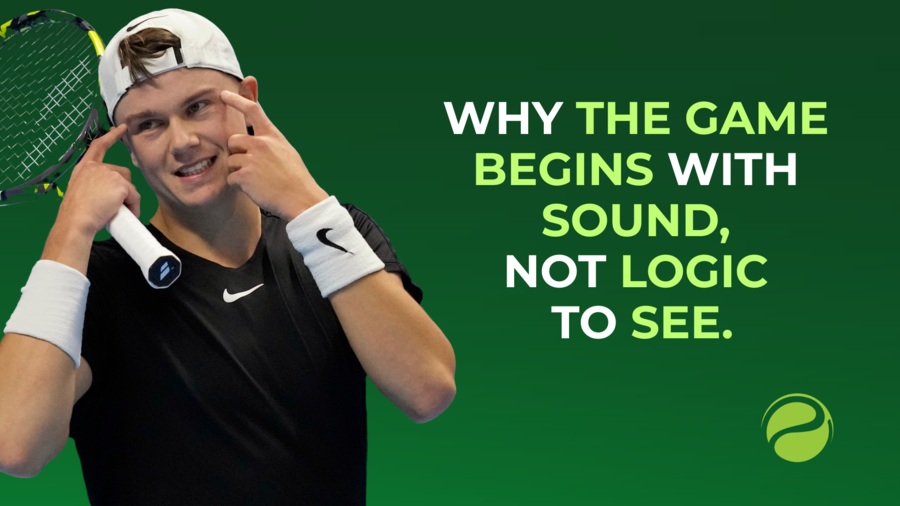In sports, and especially in tennis, we often believe that the game starts with what we see: the ball, the technique, the opponent. We think we need to “read” the other player, “see” the opportunity, “analyze” the court.
But there’s a deeper, older, more essential dimension: Rhythm is not something we see. It’s something we hear.
Rhythm is born from sound. It’s not a formula, not a strategy, not a mental calculation. It’s a sequence that arises when the player becomes synchronized with time, space, and self. And that synchronization only happens when listening becomes stronger than the desire to control.
We live in a world addicted to sight
Modern culture trains the mind to look, judge, and compare, but not to listen. We’re taught to evaluate, to fix, to see what’s missing. But in the realm of authentic play, seeing isn’t enough. Because what truly moves the player is not out there, it’s inside.
The player who learns to listen, to the sound of their breath, their footsteps, their strike, That player no longer reacts. That player creates.
Sound organizes time
When a player steps on court repeating a simple mantra through breath or voice, something powerful happens: They begin to create time from within. They are not waiting for the game to give them rhythm, They’re generating rhythm through sound.
A single, intentional sound becomes the doorway into presence:
- A soft “shhh” while moving,
- A long “ahhh” when striking,
- A quiet word that centers the body: “tempo,” “presence,” “here.”
The game doesn’t begin with sight. It begins with presence.
The player who tries to “see more” to “play better” often gets stuck in overthinking. But the player who begins to feel more, to listen more, enters a different space:
A space where the body leads, Where time stretches and flows, Where the game unfolds from the inside out.
The voice is not just for talking. It’s a tool for rhythm. It’s a bridge to presence. And it may be the most direct way to remember what play truly is: Not a reaction. But a creation.

